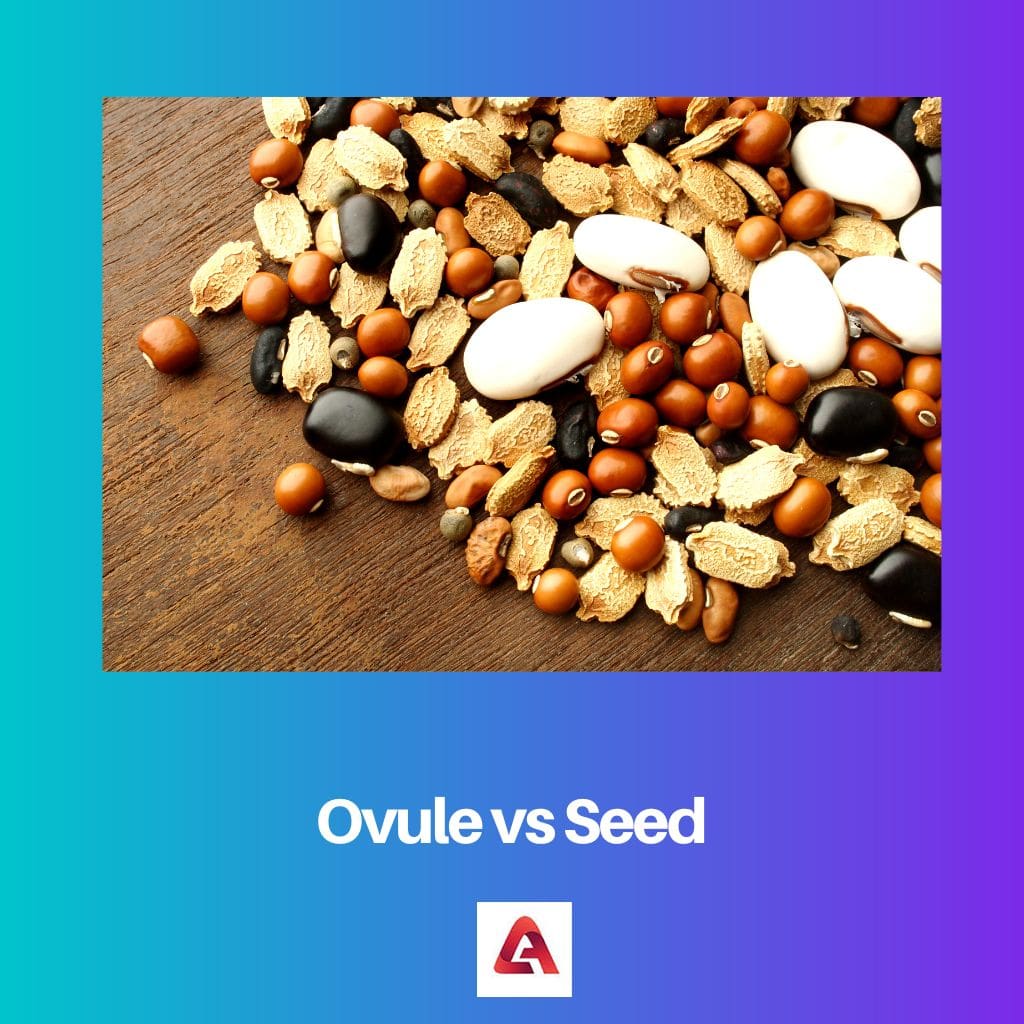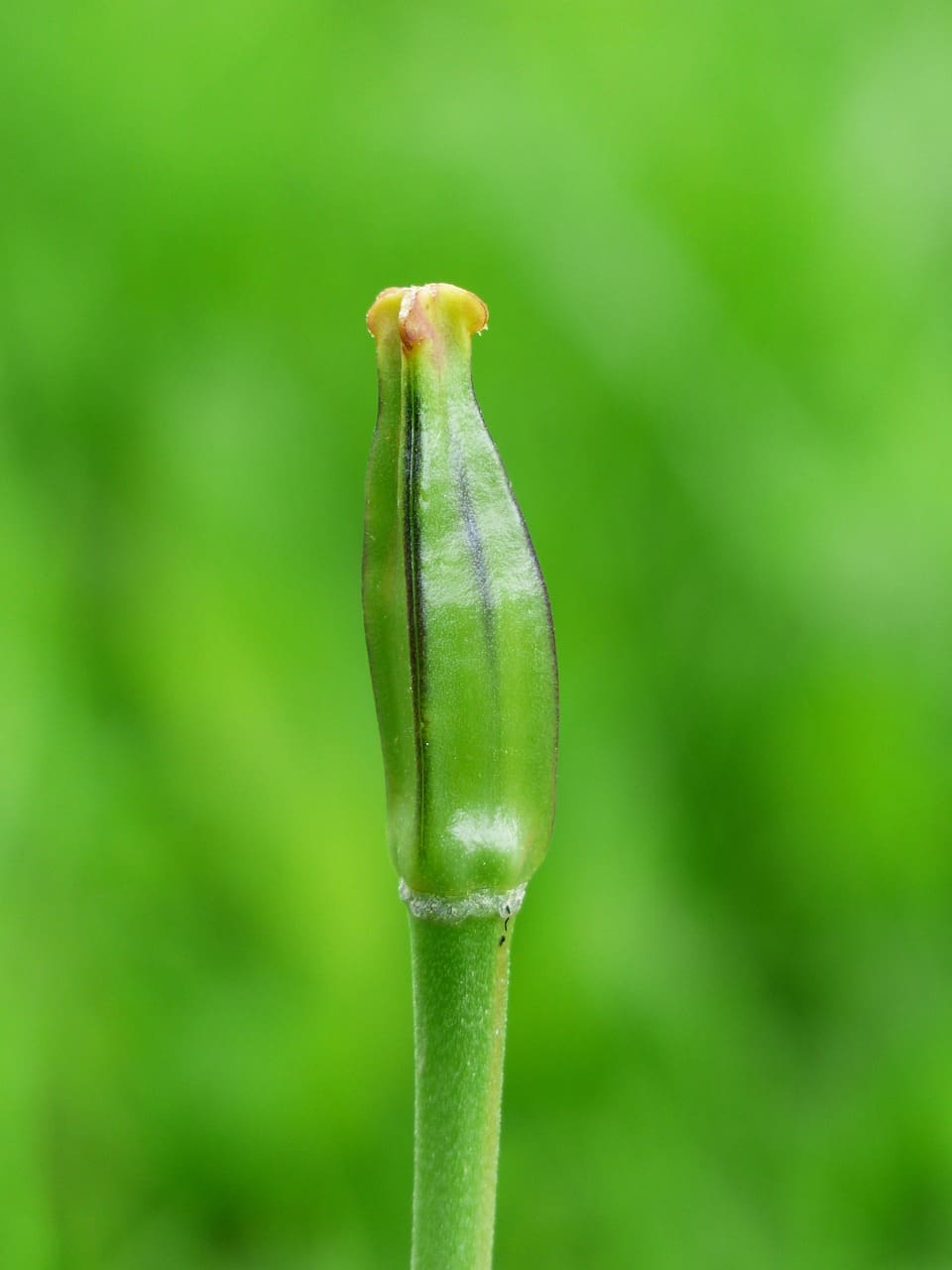Ovule and seed are two different parts of the plant. The ovule is the female reproductive organ of a plant. Seed, conversely, is the result of fertilization in plants.
These two might seem the same at a stage but are different when you understand them correctly.
The ovule is the part of the plant which fertilizes and transforms into seeds. It is the female part of the plant, which consists of eggs. The ovule is the female Gametophyte.
The ovule is the part of the pistil and is located as a part of the flower. Ovule directly transforms into a seed after fertilization.
Seed, on the other hand, is an embryonic plant. A seed coat protects the seed. Seed is the result of fertilization in a plant. It is present inside a fully developed fruit.
It is surrounded by fruit which protects it from other organisms.
Key Takeaways
- Ovules contain the female reproductive cells and develop inside the ovary of a plant, whereas seeds form after fertilization as a result of ovule development.
- Ovules are small, unfertilized structures, whereas seeds are larger, containing an embryo and stored nutrients.
- Ovules are part of a plant’s reproductive system, while seeds are dispersed for plant propagation.
Ovule vs Seed
The difference between an ovule and a seed is that ovule is an unfertilized female reproductive organ in a plant, while the seed results from fertilization. The ovule is part of a flower present in the pistil consisting of eggs, while we can say that a Seed is the fertilized form of an ovule.

The ovule consists of the female Gametophyte, fertilized by the pollen gained or the male part of the plants naturally and transformed into a seed. This can be compared to the female reproductive function in human beings.
In Ovule, we can find helium which helps it keep attached to the funiculus.
Seed, conversely, means through which a plant grows its progeny. It is formed from the ovule after fertilization takes place.
This can be compared to a human baby formed from a woman’s womb. In seeing, we find helium as well, which helps seed keep attached to the fruit.
Comparison Table
| Parameters of Comparison | Ovule | Seed |
|---|---|---|
| Place | Found inside the ovary of the pistil of a flower | It consists of integuments, the embryo sac, and nucellus. |
| Function | It produces eggs for fertilization. | It is a means of continuing progeny for plants. |
| Consists of | It consists of an embryo, endosperm, and a seed coat. | Results in a whole new plant after it is dispersed and buried underground properly |
| Result | Results into a seed after fertilization | It is present before fertilization in flower. |
| Fertilization | It is present before fertilization in a flower. | It is present after fertilization within a fruit. |
What is an Ovule?
In a plant, an ovule forms the structure, which ocan be considered the female reproductive organ. It consists of three parts: the integument, the nucellus, and the female Gametophyte.
It is a small structure present inside the ovary of the flower. The ovule is attached to the placenta by a stalk known as a funicle.
The integument forms the outer layer of the ovule. The nucellus is also known as megasporangium, and the female Gametophyte forms the centre of the ovule.
The female Gametophyte, or megagametophyte, is the embryosac in angiosperm. This megagametophyte produces the egg for fertilization.
The ovule is located located explicitly inside the gynoecium. In the gynoecium, the ovary produces one or more ovules for fertilization.
After fertilization, this structure of the ovule turns or develops into a seed. So plants with one ovule have one seed, while plants with more than one ovule have more than one seed.
The ovule is the precursor to seeds which makes then one of the essential steps for plant propagation and food production. The types of the ovule are mainly based on their structures and placement.
Their are six types of ovules i.e. orthotropous or anatropous, anatropous ovule, hemi-anatropous ovule or hemitropous ovule, campylotropous ovule, amphitropous ovule and circinotropous ovule.

What is a Seed?
A seed is an embryonic plant, just like an unborn baby. The seeds are enclosed inside a protective cover or coat. In angiosperm, gymnosperm and spermatophytes consist of seeds which are also a part of fertilization.
Seeds are produced after fertilization. The pollen fertilizes the eggs of the ovule during fertilization,, which leads to the formation of seeds.
Due to the formation of the seed in gymnosperm and angiosperm plants, their reproduction processes are much faster and more robust.
The word seed, in general,, means “anything that can be sown,” which, for example, can be seeds of the pea plant, seeds of tomato plants, seeds of chilli plants, etc.
There are many shapes in the seed, which can also differ in size and weight. The outer layer of the source can also vary. Some sources are also edible, putting them on the food production list.
Commercially also, it is a critical stand. Seeds are commercially sold in huge amounts worldwide for agricultural or domestic purposes.
Seeds are bought by farmers and even by families for gardening. As some seeds are directly edible, they are also accepted for eating.

Main Differences Between an Ovule and a Seed
- The formation of the ovule takes place in the gynoecium, while the formation of the seed takes in the ovule itself. Ovule itself turns into a source after fertilization.
- The ovule is present in flowers before fertilization, while the seed is in the main fruits after fertilization.
- Ovule has a female gametophyte, while the seed is the embryonic plant.
- The integument layer of cells protects the ovule while the seed coat protects the seed.
- The ovule is attached to the placenta, while the seed is attached to the fruit through the hilum.
- Ovule produces the egg cells, while the seed produces a new plant when sowed.

- https://academic.oup.com/botlinnean/article-abstract/97/3/267/2660260
- https://onlinelibrary.wiley.com/doi/abs/10.1111/j.1365-2486.1997.gcb130.x
- https://academic.oup.com/jxb/article-abstract/43/5/709/586656
- https://nph.onlinelibrary.wiley.com/doi/abs/10.1111/nph.16792

I found the comparison table to be very helpful in understanding the distinctions between ovule and seed.
The article explained the technical details very thoroughly, and I certainly have gained a deeper understanding of ovule and seed.
While I appreciate the factual information, I found the article a bit dull and lengthy. I wish it were more engaging.
Ovule and Seed are such interesting parts of a plant, I found this article very informative!
I feel like the tone of the article was a bit too serious for a topic like this. Could have been more interesting.
The article provided very insightful points about the differences between ovule and seed. I enjoyed reading it.